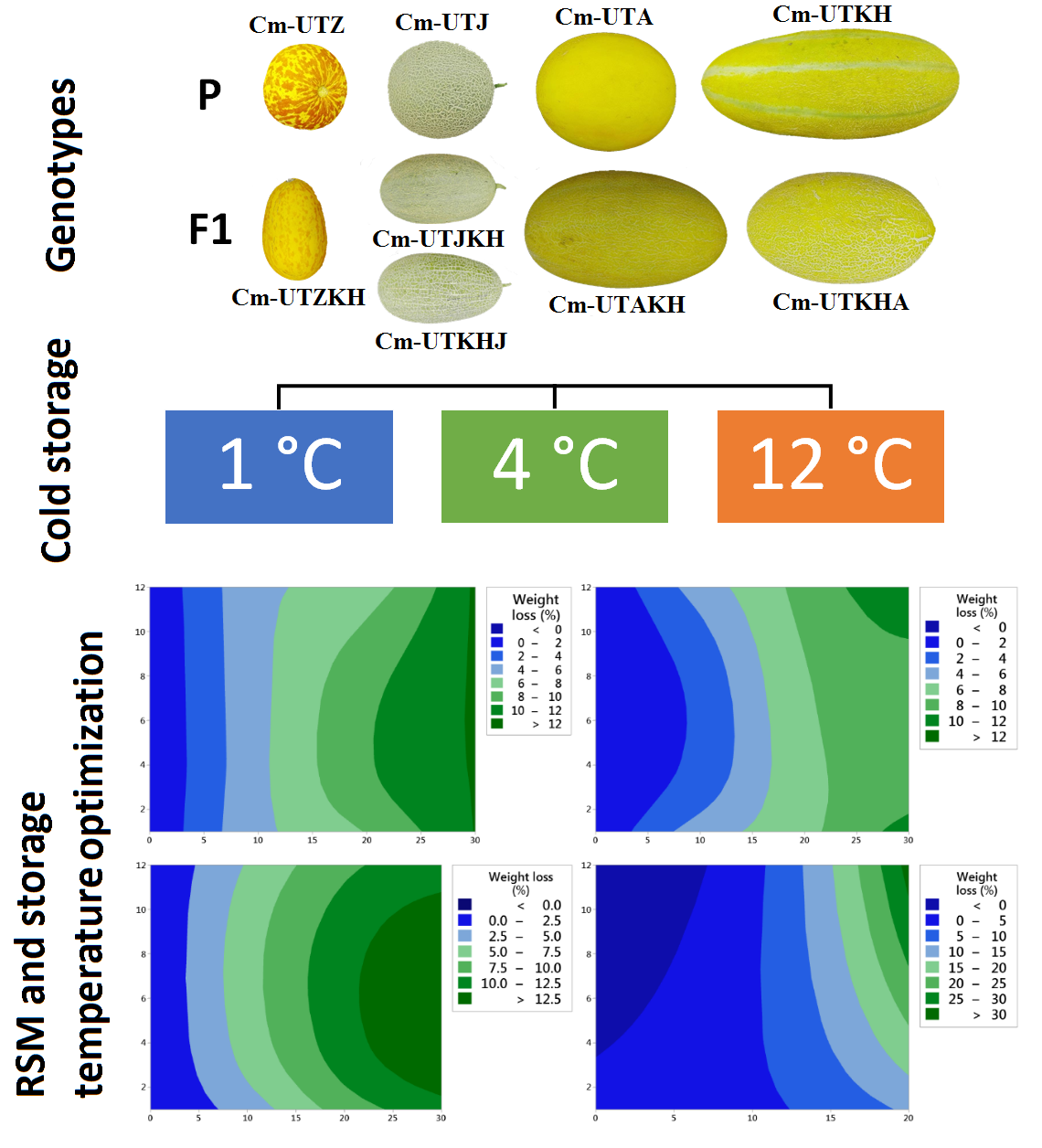Postharvest performance interpretation and storage temperature optimization in some newly introduced melon hybrids

Published 2022-01-14
Keywords
- Cucumis melo,
- Principal component analysis,
- Storability,
- Surface response method
How to Cite
Abstract
Temperature is a key factor in melon cold storage. Thus, optimizing storage temperature is an important goal in postharvest research. In this experiment, postharvest attributes of four inbred lines and five derivative hybrids were investigated under three storage temperatures (1, 4, and 12°C). Melon fruit were evaluated for their main characteristics directly after harvest and postharvest changes were monitored through cold storage period. Cluster analysis results showed that most of the hybrids clustered with their maternal parents illustrating the significant role of cytoplasmic inheritance for the studied traits. Similarly, principal component analysis clustered the studied types into three clusters according to their average postharvest behaviour. The best postharvest performance belonged to inodorus and cantalupensis netted melon with their intercrossing breeds. While the dudaim inbred line and its hybrid scored the highest postharvest changes. Response surface analysis showed that 1.8°C was the optimum storage temperature for inodorus and cantalupensis clusters, while 5.1°C was the best storage temperature of dudaim cluster. The results of the current study are similar to previous reports for optimum storage temperature in similar melon types.






